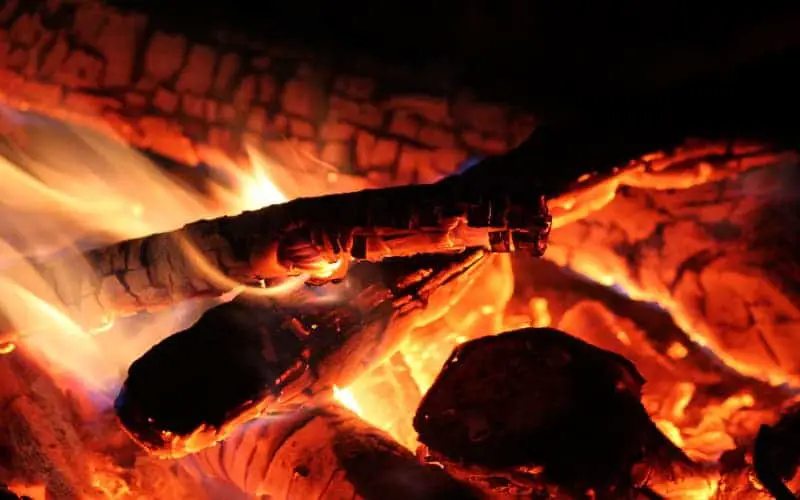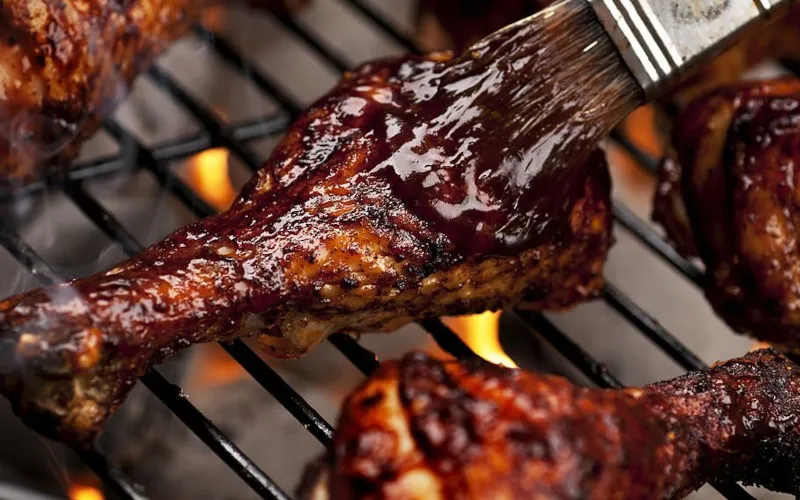Carbon steel and cast iron are two popular materials that are often used for cookware. They have many similarities, but also some notable differences.
In this article, we will look at the benefits of each material in detail to help you make an informed decision when choosing your next set of pots and pans.
What is Carbon Steel?
Carbon steel is known for its durability and sturdiness. It can withstand high temperatures, which makes it perfect for cooking in large pots or skillets.
This metal is made from iron and carbon heated together in an oven until they combine to form steel alloy.
Carbon makes the structure more rigid than other metals like stainless steel which contains chromium.
The composition of carbon steel can vary depending on the producer, but it typically contains between 0.25% and 2% carbon by weight for increased hardness and durability.
While carbon steel conducts heat very well, the material is slow to respond when you adjust your stove setting. This means that there may be some hot spots on your pan unless you are very careful.
In most cases, carbon steel is coated with a layer of enamel to prevent corrosion and discoloration from occurring as it ages. It can also be left uncoated after manufacturing so that the metal will develop its own patina over time.
This type of cookware tends to carry more flavor than other types because there is a greater contact surface between the food and the metal.
While carbon steel is very versatile, it isn’t capable of withstanding high temperatures like cast iron can. It also requires frequent seasoning and cleaning to prevent rust from forming on your cookware.
If you choose this material for your set of pots and pans, make sure that they are dishwasher safe and aren’t lined with any type of plastic.
What is Carbon Steel Used For?
Carbon steel has many commercial applications such as construction sites, but it’s also commonly seen in home kitchens – particularly among professional chefs who need high-quality cookware that can handle heavy use.
What Are Some Benefits and Features of Using Carbon Steel?
One benefit that sets apart carbon steel from cast iron is its ability to conduct heat at a faster rate.
Carbon steel has the ability to heat up quickly and evenly, which makes it perfect for searing meat or other types of high-temperature cooking methods. It also has a long life span – carbon steel can last for decades with proper care and maintenance.
How Should Carbon Steel be Cleaned?
Carbon steel is easy to clean – simply wipe it down with a damp cloth after use and dry thoroughly before storage. It’s also dishwasher safe, but make sure it doesn’t come in contact with any harsh chemicals like bleach or other cleaning products that contain sodium as this can damage the steel.
How Do I Season Carbon Steel?
Carbon steel does not require seasoning like cast iron, but it can benefit from some extra care and maintenance.
To season your carbon steel cookware, follow these steps:
- Wash the pan thoroughly with hot water and soap and dry completely before use.
- Next heat up a tablespoon of cooking oil over medium heat until the oil starts to smoke.
- Swirl the oil around to coat all sides of your pan.
- Carefully pour out any excess cooking oil and wipe down with a kitchen towel, then leave it on low heat for another two minutes before cooling completely.
What is Cast Iron?
Cast iron is a metal that is made by melting pig iron and pouring the molten iron into molds. It’s called “cast” because it can be cast, or molded, into many different shapes. Cast iron cookware has been around since the 5th century BC.
Cast iron is a type of metal that is known for being durable and retaining heat well. It can also be used for a variety of purposes, such as cookware. This metal is made from iron that has been cast into a mold and then heated until it becomes molten.
It is estimated that there are thousands of years worth of iron ore on earth.
Cast iron is a high-carbon material that is less reactive than steel. This metal is versatile and tough enough to not require as much seasoning like some other metals. Cast iron can be used on the stove, in the oven, on grills, and over an open flame.
There are a few different varieties available on the market today, such as grey cast iron and white cast iron. Some cast-iron skillets are made with enamel, which has become more popular thanks to the growing number of induction stovetops on today’s market.
Cast iron can withstand high temperatures, which makes it great for deep frying and searing meat. The thickness of cast iron also helps to distribute heat more evenly across your cookware, so there are usually very few hot spots that could burn food if you do not stir often enough.
Furthermore, enamel-coated cast iron is non-reactive, so it doesn’t interact with food in a negative way.
Enamel-coated cast iron skillets are often oven safe up to 500 degrees Fahrenheit or higher, while uncoated varieties can withstand even higher temperatures than this. However, the material will rust if not properly cared for and seasoned before it is used for the first time.
What is Cast Iron Used For?
Cast iron has a lot of commercial applications, but it’s most commonly seen in professional cooking settings as the material can easily break if dropped or mishandled by a novice chef.
It also requires some extra care and maintenance compared to carbon steel.
While cast iron can be a great material to use, you will need to spend extra time cleaning and maintaining your cookware after every use.
What Are Some Benefits and Features of Using Cast Iron?
One benefit that sets apart cast iron from carbon steel is its weight – cast iron pots and pans tend to be much denser and heavier than carbon steel.
This makes them a great choice for cooking on the stovetop or in an oven, as they can handle steady high heat without warping or getting damaged.
Cast iron is extremely durable, which makes it perfect for high-temperature cooking methods such as sautéing or searing meat. It’s also affordable compared to many other options on the market.
How Should Cast Iron be Cleaned?
Cast iron can handle high heat which makes it perfect for sautéing and cooking in general, but the material requires a little more TLC than carbon steel when it comes to cleaning as seasoning is required after each use.
After you’re finished cooking with cast iron, make sure to clean and dry the pan thoroughly and then rub it with a small amount of vegetable oil or lard to protect against rust.
How Do I Season Cast Iron?
Seasoning refers to coating cast iron with a thin layer of oil, fat, or grease after use to prevent rusting and protect the cookware.
To season your cast iron cookware:
- Wash the pan thoroughly with hot water and soap and dry completely before use.
- Heat up a tablespoon of cooking oil over medium heat until it starts to smoke. Swirl the oil around to coat all sides of your pan.
- Carefully pour out any excess cooking oil and wipe down with a kitchen towel, then leave it on low heat for another two minutes before cooling completely.
If you want to buy cast iron skillets, make sure that they are enamel coated so there is no need for seasoning before using them the first time. Otherwise, it’s best to purchase uncoated varieties if you know how to properly care for this type of cookware after purchasing it.
What are the Main Differences Between Carbon Steel and Cast Iron?
The main difference between carbon steel and cast iron is the material from which they are manufactured. Carbon steel is a metal alloy that contains varying amounts of carbon and manganese, so it has a range of hardness. The higher the level of carbon, the harder it becomes.
Cast iron is a hard, brittle material with a high melting point. It has a lower melting point than carbon steel and so is good for cooking at low temperatures.
Carbon steel is lighter weight than cast iron, but both types of pans can provide excellent heat distribution and retention which makes them ideal for all kinds of cooking projects – particularly if you enjoy searing meats or sautéing vegetables.
Cast iron is a heavier material that requires some extra care and maintenance to prevent rust, but it’s also more affordable than carbon steel cookware – making it an excellent choice for home cooks on the hunt for high-quality commercial cooking equipment.
The different properties of these two materials also mean that they react differently when used as cookware. Carbon steel heats up quickly but cools down quickly too, while cast iron tends to heat up more slowly but stay hotter for longer.
In terms of pricing, cast iron pans are often more expensive than carbon steel pans. However, the cast iron material is usually of a higher quality than carbon steel and so they will last longer.





